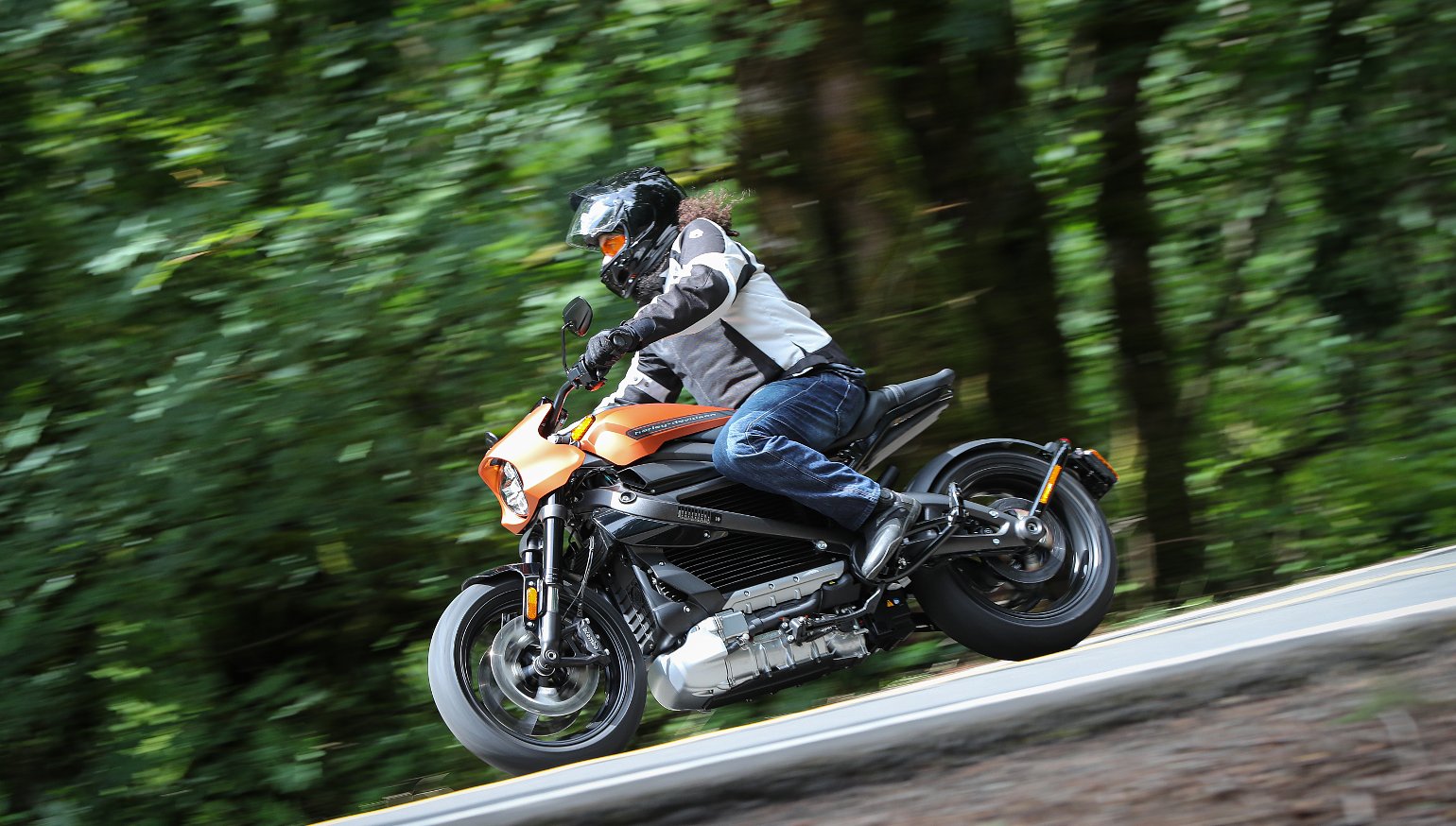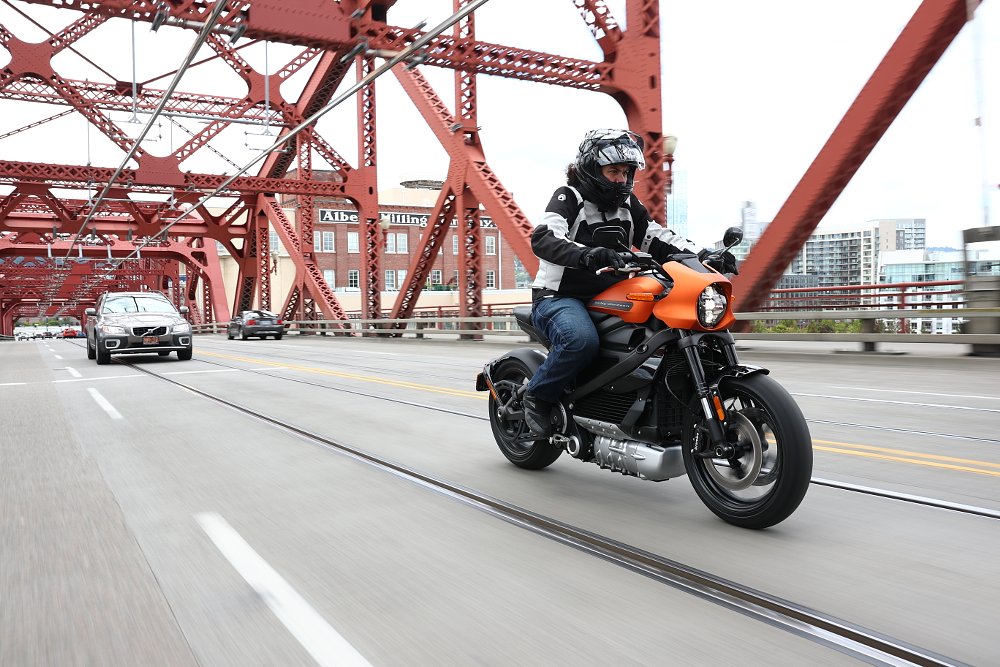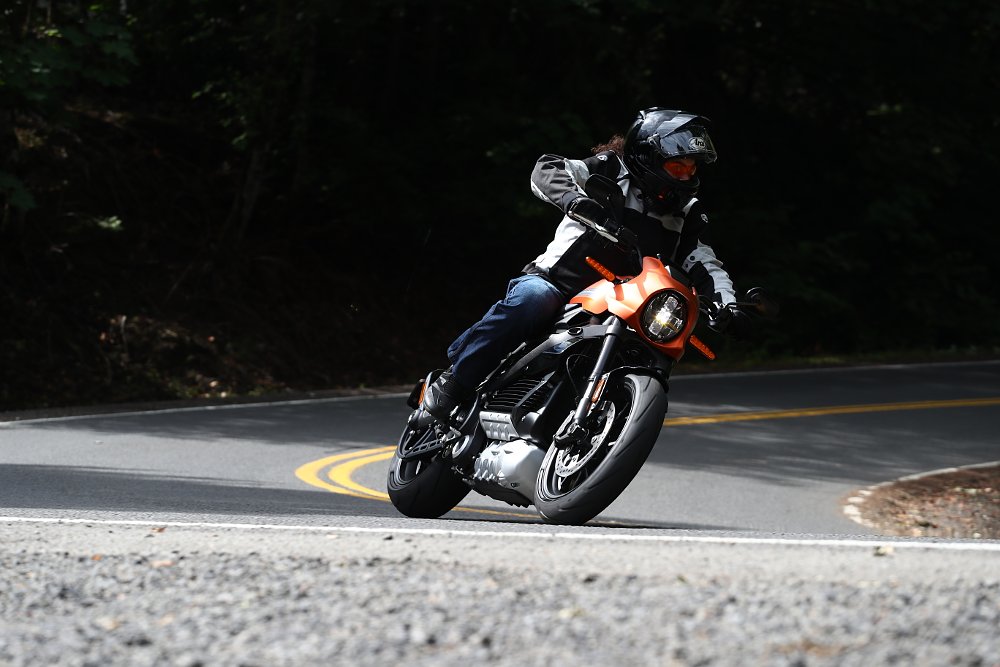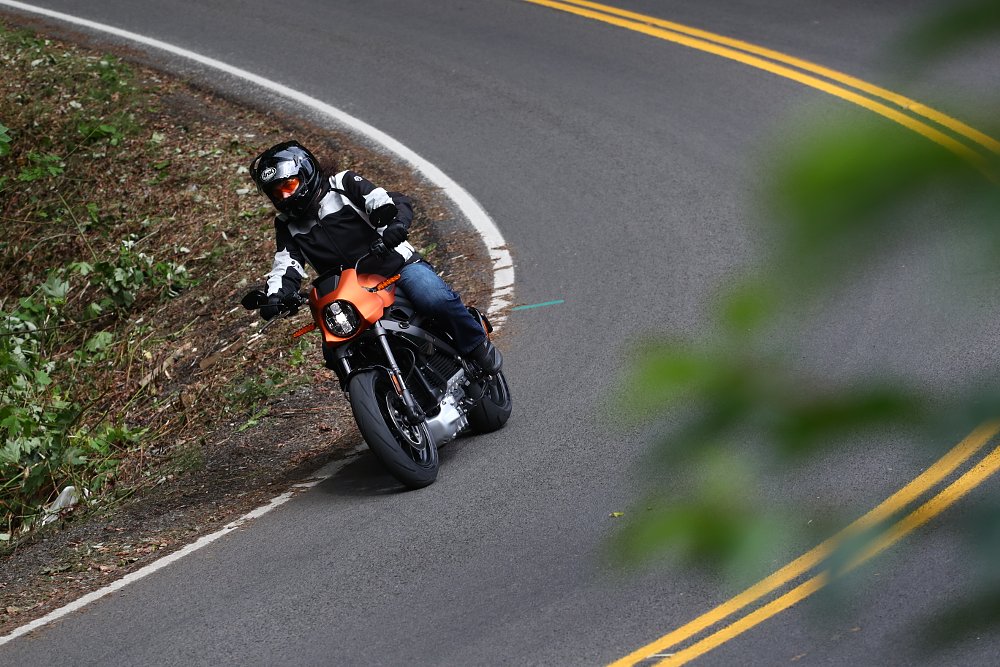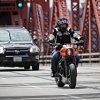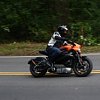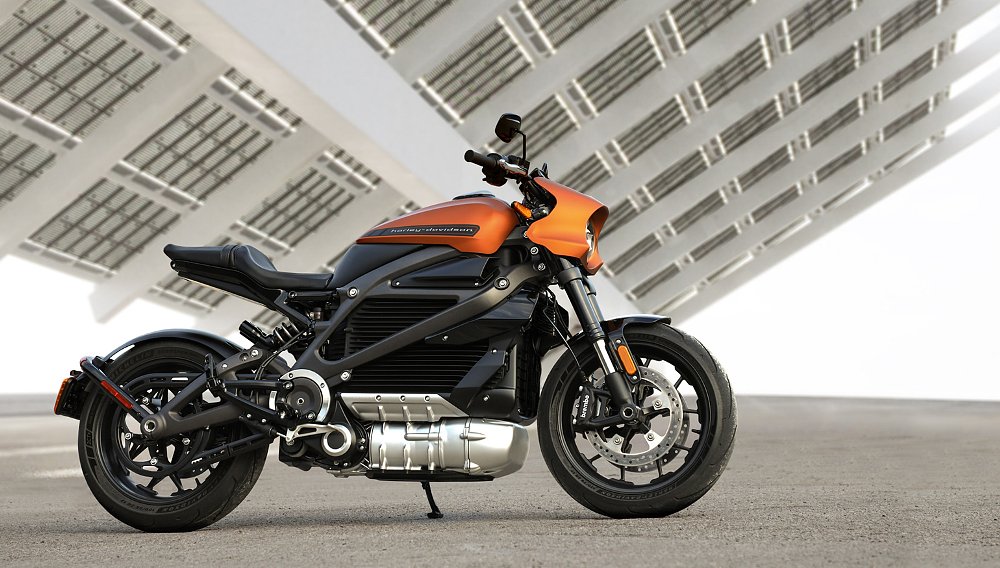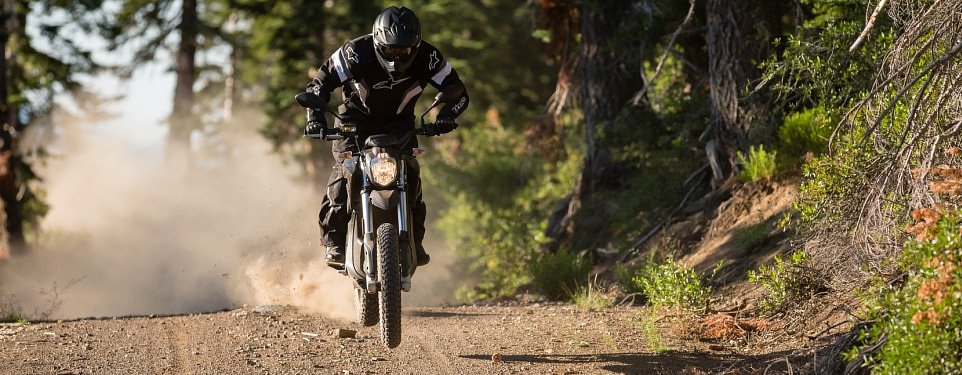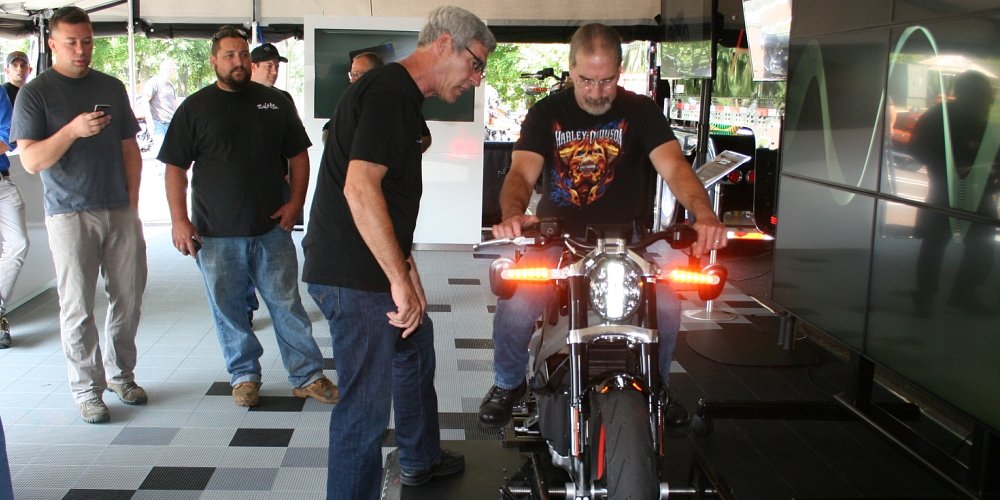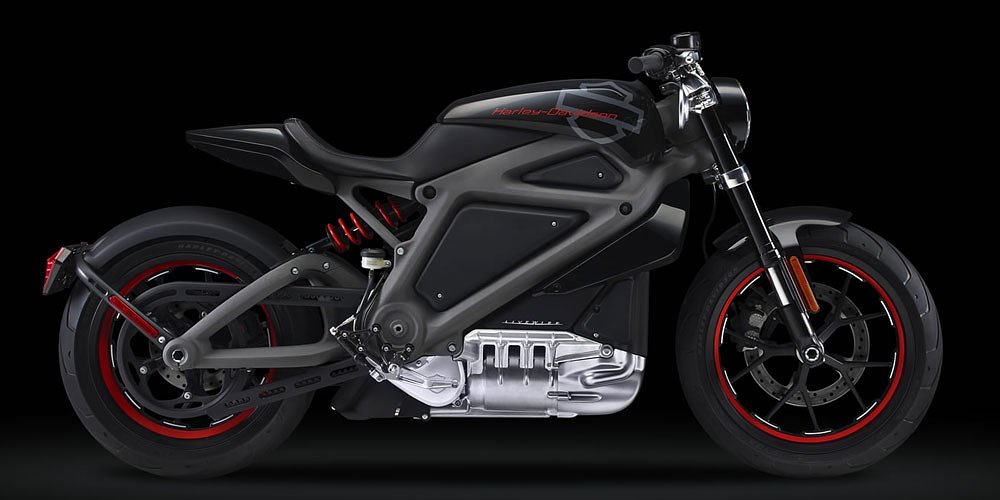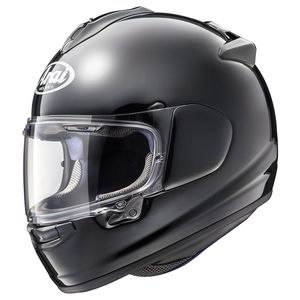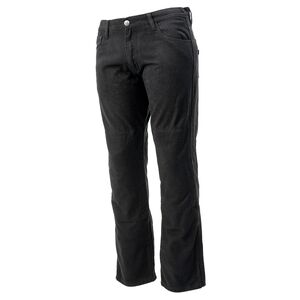The point of this motorcycle is not just the motorcycle.
The point of this brief motorcycle review, then, must also go beyond the motorcycle itself. Harley-Davidson ain’t gonna sell many. (In fact, a rep for the company refused to state a sales projection when I asked point-blank for one.) The LiveWire is a very visible step by the MoCo into an all-new direction into an area of motorcycling that is new, expanding rapidly, and where they may more easily blow past the competition than they might in the more established segments. Whether it’s good or disappointing, LiveWire will shape people’s views on what Harley-Davidson is and what they can do.
So which is it — good or disappointing? Well, as you’ll find out shortly, I refuse to render a verdict on this motorcycle after such a short ride, but I will unequivocally state that Harley-Davidson certainly changed my mind on what they can — and more importantly will — do to save their ass.
The big four
We first rode the LiveWire in 2014.
Since that time, of course, electric motorcycles have changed quite a bit — the players in the game, the hardware available, and of course, the motorcycles themselves. But they don’t differ enough to change how they’re assessed. In an ideal world, I’d simply review this motorcycle the same as an ICE scoot. Except we’re not there yet. This technology may not be nascent, per se, but it is still very much emerging, and for most people, four questions loom large before they consider an electric motorcycle. A few of these specs have varied a bit, but here are Harley’s final answers to the four questions nearly everyone asks: How much, how far, how long and how fast?
How much? $29,799.
How far? Harley claims 146 miles of city range or 95 miles of combined stop-and-go and highway range using the SAE J2982 test. They claim 70 miles of range at 70 mph sustained.
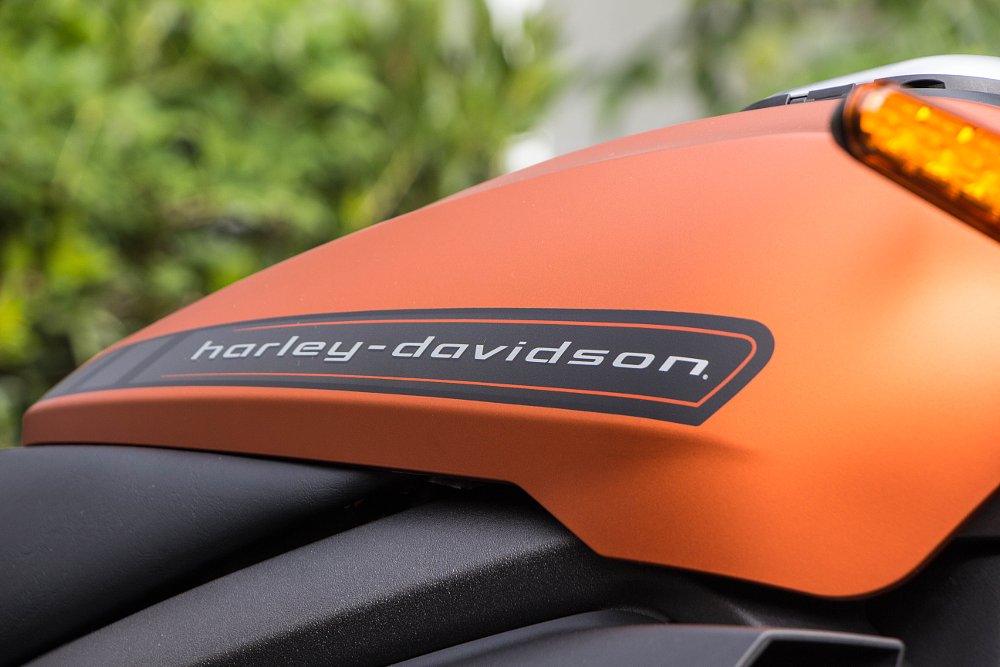
How long? You can charge at three levels for EVs. Charging a Live Wire at Level 3 DC Fast Charge stations delivers an 80 percent charge in 40 minutes or a 100 percent charge in one hour. Level 2 chargers can be connected, but to no electrical benefit: Level 2 chargers charge at the Level 1 rate. (That’d be at 120V, or just plugging into a wall outlet. In fairness, it can charge at a Level 2 station, which at least opens up the possibility.) Level 1 times are unverified, but Harley claims target time of 12.5 hours for a full charge. A Level 1 charger is included with the motorcycle, and has a storage spot under the saddle.
Per The Mothership: “All participating authorized Harley-Davidson dealers selling the LiveWire model will offer a public DCFC charging station at their dealership. U.S. LiveWire customers will receive free charging on ChargePoint stations at participating LiveWire dealers for the first two years. Additionally, Harley-Davidson will provide U.S. LiveWire owners with 500 kWh of free charging service at Electrify America DCFC charging stations.”
Here’s the rub: as of the press launch, Harley estimated there were about 150 participating dealers in this country, though they expect that number to increase. On the one hand, that’s more than any other electric motorcycle manufacturer I am aware of. On the other hand, it’s nowhere near the roughly 700 H-D dealers in this country that support the ICE units.
How fast? Harley-Davidson does not currently appear to post a top speed for the LiveWire. They had previously reported 110 mph to Common Tread. 0-60 time is three seconds. In my brief time on the LiveWire, I wasn’t able to test for top speed, but I did see an indicated 102 mph.
Stuff I noticed walking around the LiveWire
The Revelation motor is rated for 105 horsepower and 86 foot-pounds of torque. Take note: This is the first time I can ever recall Harley-Davidson releasing a horsepower claim. The motor is liquid-cooled, and there is a small radiator at the front of the motorcycle. This adds a fluid to change to the minimal maintenance schedule, which kind of sucks, but it also works. I can’t speak for Zero’s latest offerings, but they claim that their “...compact brushless motor requires no liquid or forced-air cooling.” However, when I tested their DSR, I was hampered quite a few times by the thermal management system. They’re not technically wrong in that the bike will protect itself, but it also severely limits how rideable the machine is. The Harley? Later, I beat it like it owed me money. No overheating problems at any point.
The 15.5kWh high-voltage battery (RESS in Harley-ese, for Rechargeable Energy Storage System) sits above the motor, and carries a five-year, unlimited-mileage warranty. The motor is actually installed such that the output shaft is transverse to the direction of travel, so it requires a gearbox with a bevel drive. The gearset “is designed to produce a signature Harley-Davidson sound as the LiveWire motorcycle accelerates and gains speed; a new sound that represents the smooth, electric power of the LiveWire motorcycle.”
I had two thoughts about this. First, the gearbox is a service point; I am certain that that oil will need occasional replacement. My second thought came later, after riding the bike. The noise this bike makes upon acceleration is much less arresting than Harley’s flowery prose makes it sound. It was pretty dang quiet, and I appreciated that. It also really reminds me of a Roots-style supercharger visually, and that has to have been intentional on the part of the designers.
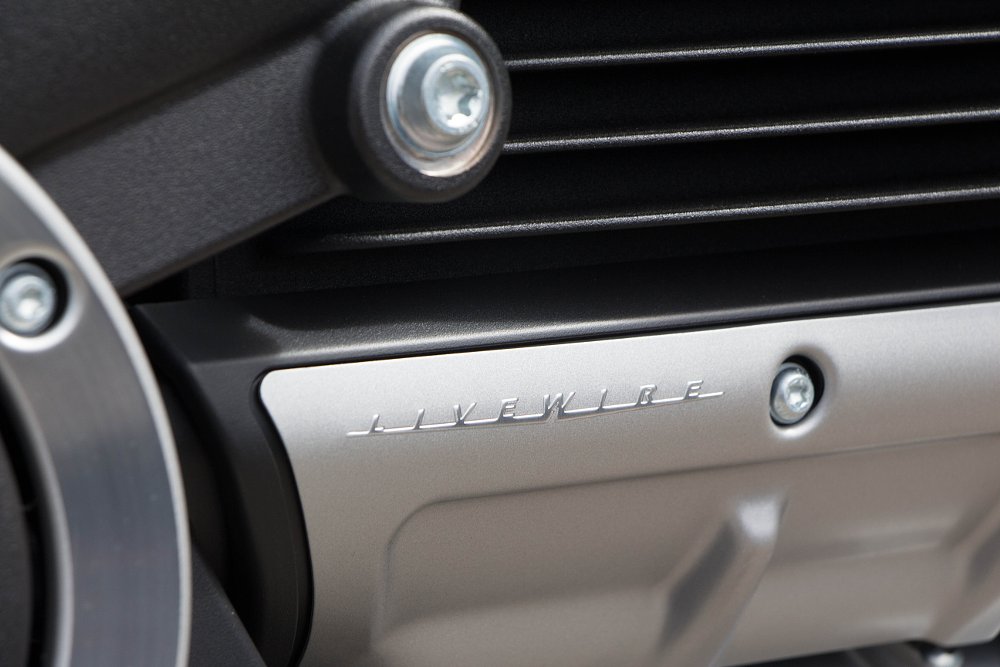
The motor is painted silver, certainly to draw the eye from the large box that is the battery. And honestly, that silver paint is about as close to chrome as you’ll get on this bike. It is not a traditional H-D. I went over the whole bike with a fine-tooth comb, and I am pretty sure there is none used aesthetically.
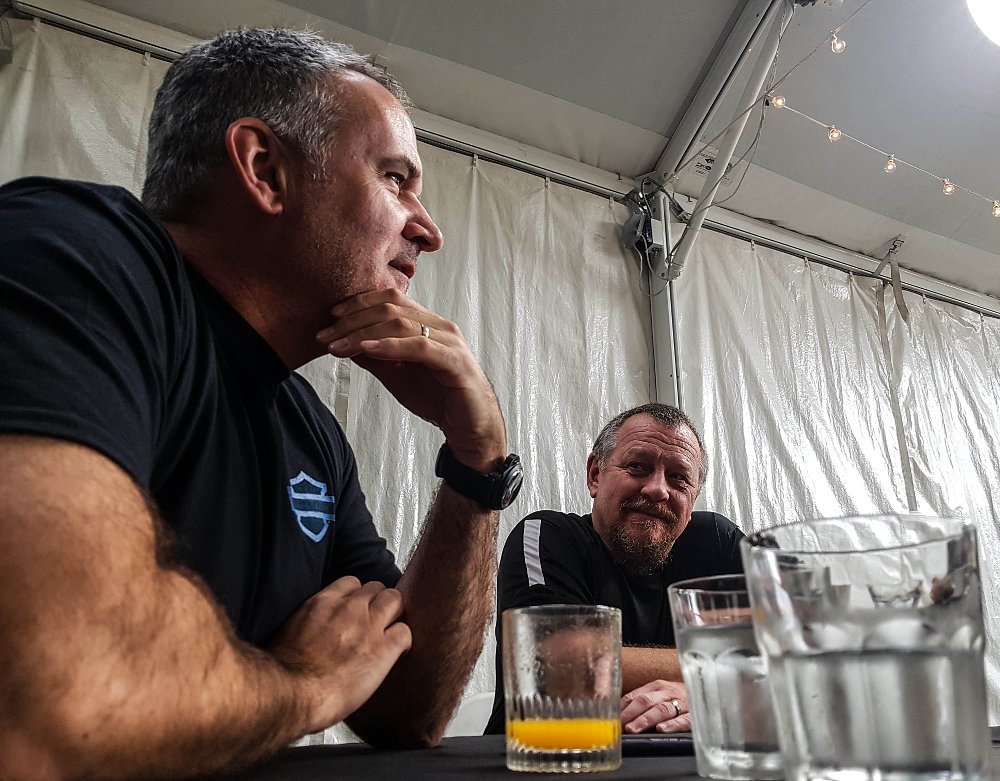
The final pre-ride “huh” I muttered to myself happened around 7:30 in the morning, as I was struggling with a coffee thermos that was giving me fits. I saw a face that looked familiar, but I couldn’t place the guy. Someone finally snapped the puzzle pieces together for me: it was Matt Levatich. He’s their CEO. I don’t know what his hourly rate breaks down to, but I imagine for him to show up to a new bike launch to talk to the likes of me means he thinks the LiveWire is pretty important.
OK, Lem, shut up and let’s hear how it rode
I spent roughly 70 miles on the LiveWire; more than a test ride, but far less than I’d ever consider riding for a full review.
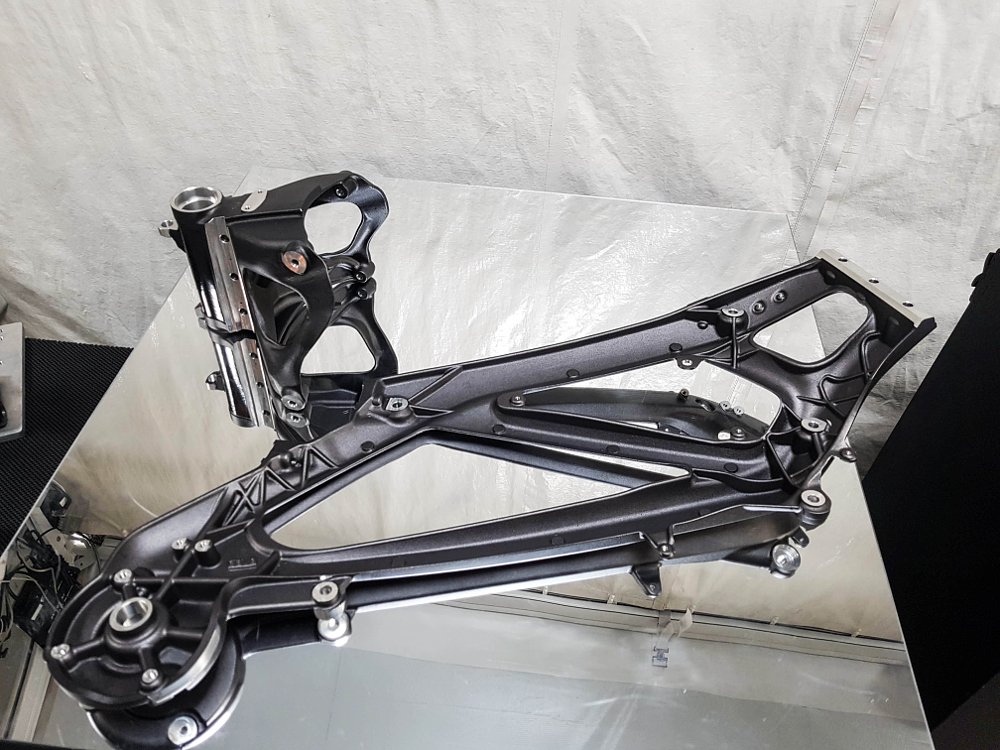
I picked the bike up off the sidestand, and it really did not feel as heavy as I expected. (The LiveWire is 549 pounds. Its obvious competition, the Zero SR-F, rings in at 485, so H-D is not out to lunch on this machine.)
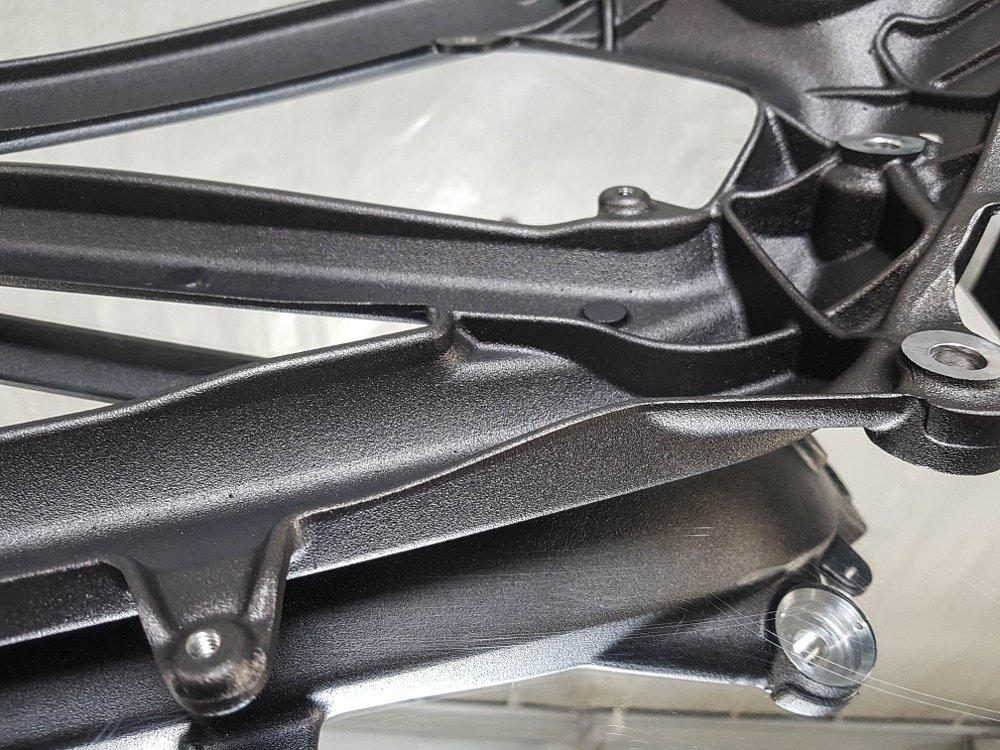
I hit the go-button, and the 4.3-inch TFT dash lit up. It’s got an ambient light sensor, so it’s pretty much always at the correct brightness. It’s also capacitive (responds to touch), which I didn’t find out until later, but everything I did with it I controlled from the right-side joystick.
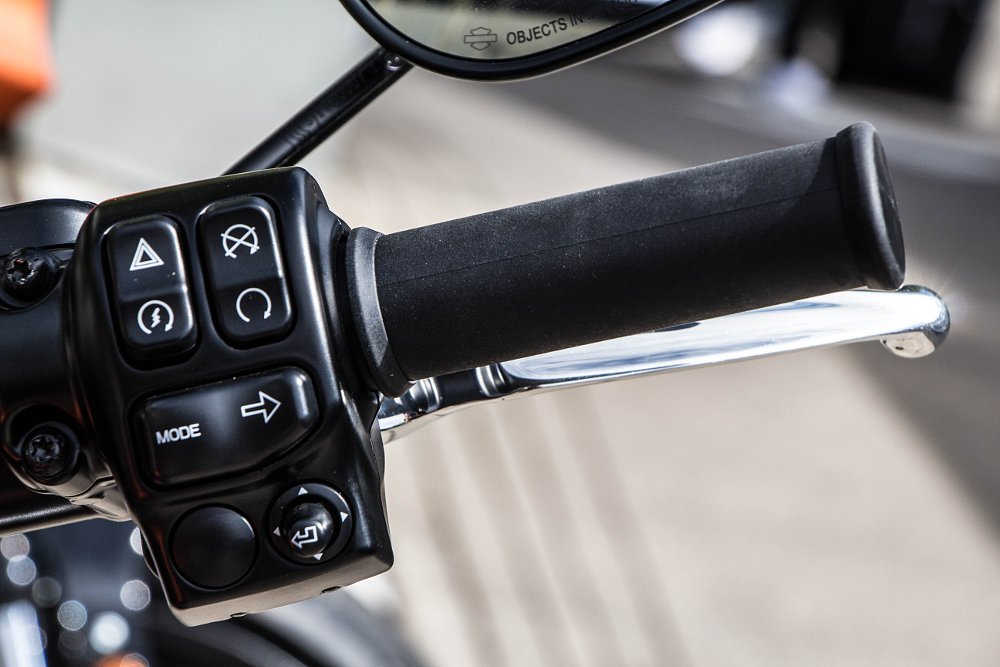
The setup here is slick and beautiful; this is easily the best dash on any electric bike I’ve ridden and it’s on par with the top dashes I can even think of on any motorcycle. I’ll come back to the dash in a bit, but at first blush, “it’s a beaut, Clark!”
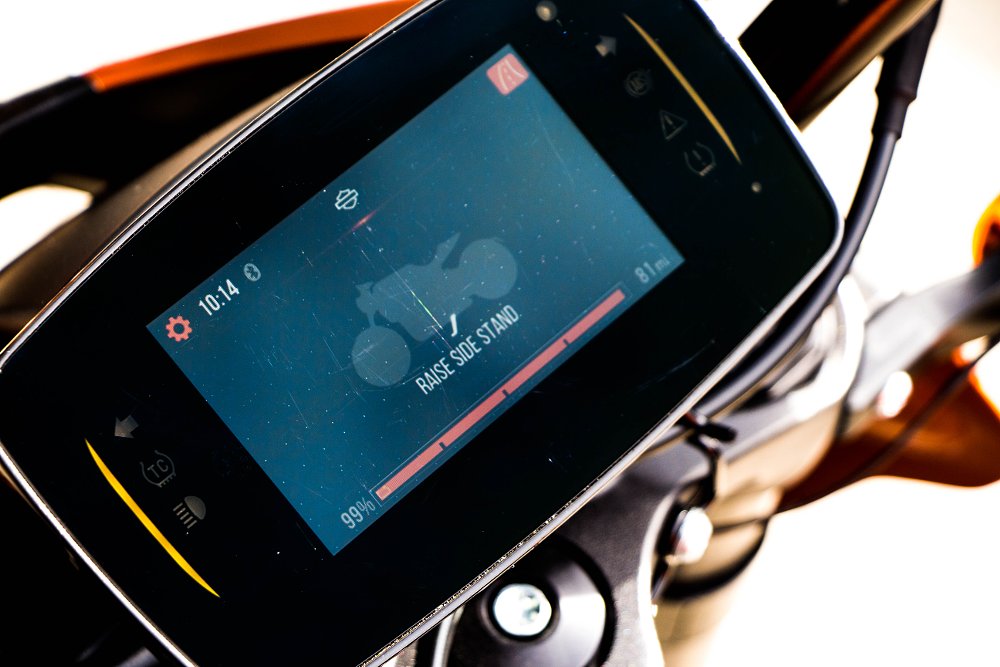
Now I should describe the haptic pulse. We were told about this in the media presentation, and much like the bike’s noise, I misinterpreted what to expect based on description. For those of you who aren’t tech-tastic, haptic response is when an item responds in a tactile nature. You know when your phone vibrates when you type a letter in a text message? That’s haptic.
Harley’s crew told us the bike would do this at idle. (It goes away at speed.) I expected to mean that this was to give some sort of Harley “thump” like all the ol’ paintshakers in my garage, and I rolled my eyes.
But I was wrong. The haptic cue is not what I thought. First, it’s way slower than a loping V-twin. It's actually is about the exact cadence I would associate with a heartbeat at rest. It’s really unobtrusive. You might not even notice it if someone didn’t tell you about it; more likely, you'd perceive it and maybe even not register it was happening. (This feature can be changed or turned off at your dealer.)
I liked it immediately. I always felt other ebikes were toylike in that I’ve never had a non-visual cue that the snarling animal underneath me was ready to hurtle my soft, meatbag body into non-yielding structures with the simple twist of a wrist. (If you get onto a nasty ICE bike, usually a blip or two of the throttle will make you acutely aware the machine is in “kill” mode.) It’s an excellent example of H-D bringing their expertise in experience to electric motorcycles. I never realized I wanted this, but I do.
Away we went. The bike was responsive and powerful. Just a simple look at some of the specs will tell you all you need to know. There are standard sportbike-size tires, like you’d expect on a standard. (They are Michelin Scorcher Sports, which is a new-for-HD tire, and they’re really a good skin, so far as I can tell. I’ve been happy with all variants of the Scorchers I have used so far, and there is a hell of a range.) 24.5 degrees of rake, 4.3 inches of trail. Big, fat, dual four-pot monoblock calipers. You can use your knees to grab the tank. (In fact, H-D even brought the seat material down into this area, so you can really bear down hard.) If you always hated Harleys because of the ergos and the ride, then go ride this. A relaxed, upright-ish naked or sport-touring position is still my personal fave, and this bike finally hits it. I would call this the first Harley-Davidson I have ridden that finally gets ergonomics one-hundred-percent correct. That’s good for them in that I will praise them for it. It’s bad for them in that we now have proof they can do this, and when they don’t, they will now deserve the flogging I give them for their sin.
We clipped right along, and I was throwing it harder and harder into turns until I was comfortable as I was gonna get throwing a thirty-thousand-dollar motorcycle I didn’t own near the pavement. Later, in talking with one of the H-D staffers, I mentioned that this was the first ever H-D launch I had attended where I hadn’t scraped a part of the motorcycle, not even a hero blob. He responded that LiveWire had the highest lean angle of any motorcycle they’ve ever produced, at 45 degrees on both sides. Makes sense. (I haven’t verified, but this must be the fastest production bike they’ve done, too.)
Just for funsies, I got a little silly in one straight we traversed three times for photos. I hit 96, 99, and 102 mph on the three passes and ran out of asphalt before I ran out of throttle. Range estimates didn’t seem to get thrown off, so I think H-D played it conservatively on those. Kudos. Back to the dash: the motorcycle has several rider modes. I played with all of them, but found Sport and Road to be the most thrilling, unsurprisingly. There’s also a Rain mode, as well as a Range mode which was not nearly the buzz-kill I expected. LiveWire's regenerative braking can be custom-tailored, too.
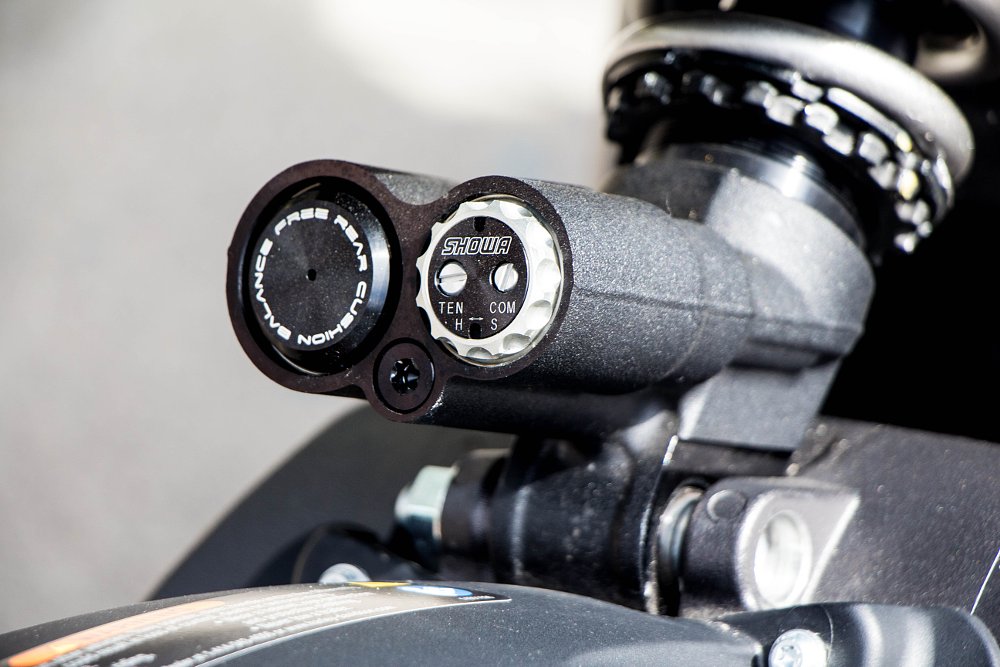
This motorcycle is fitted with real suspension. Up front the triple clamps fully adjustable 43 mm Showa SFF-BP tubes (that’s Separate Function Fork, Big Piston). Out back is a Showa BFRC-lite (Balance Free Cushion Lite) handling the damping, also fully adjustable. I didn’t diddle one knob or clicker, as we didn’t have time, and even at factory settings, the suspension quality was immediately noticeable. It’s… real suspension. On a bike with real frame geometry. None of this “for-a-Harley” business. It’s just good.
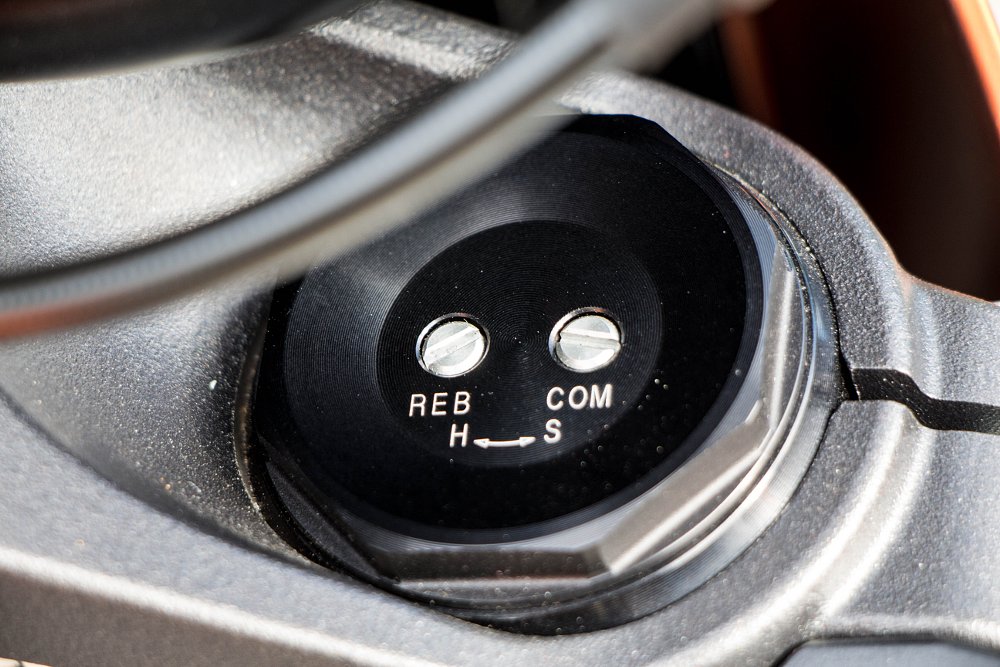
Corner exits on the LW are a gas, partially due to that suspension, and partially because you can nail the throttle and the LiveWire just shows up where you pointed it, except far faster than you probably expected. In one section of curvy road, I was really having a ball, and straightened out a couple of corners. I was on the inside of a right, pointing straight to get to the inside of a left ahead of me, and I made a mistake I have been making for two decades of riding: I overcooked a corner, overconfident in my own abilities and lately, relying on electronics to help me save my stupid self.
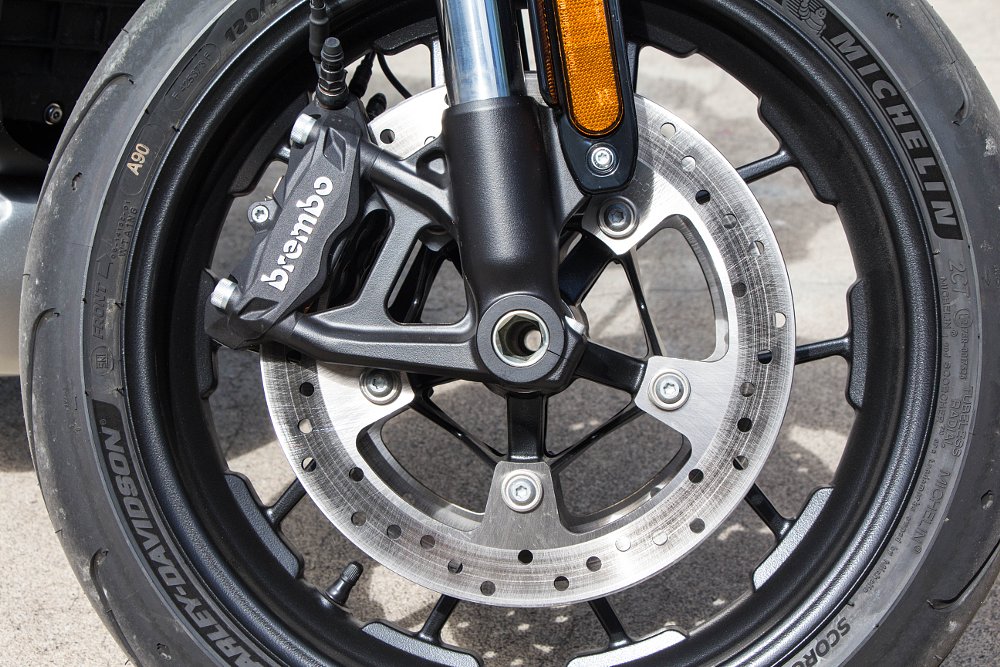
It wasn’t a big deal. The LiveWire stepped in and helped. It has standard cornering ABS, and I could feel it working through both wheels as I fought to keep the bike down in the turn. The front brakes are phenomenal, and the rear is no slouch either.
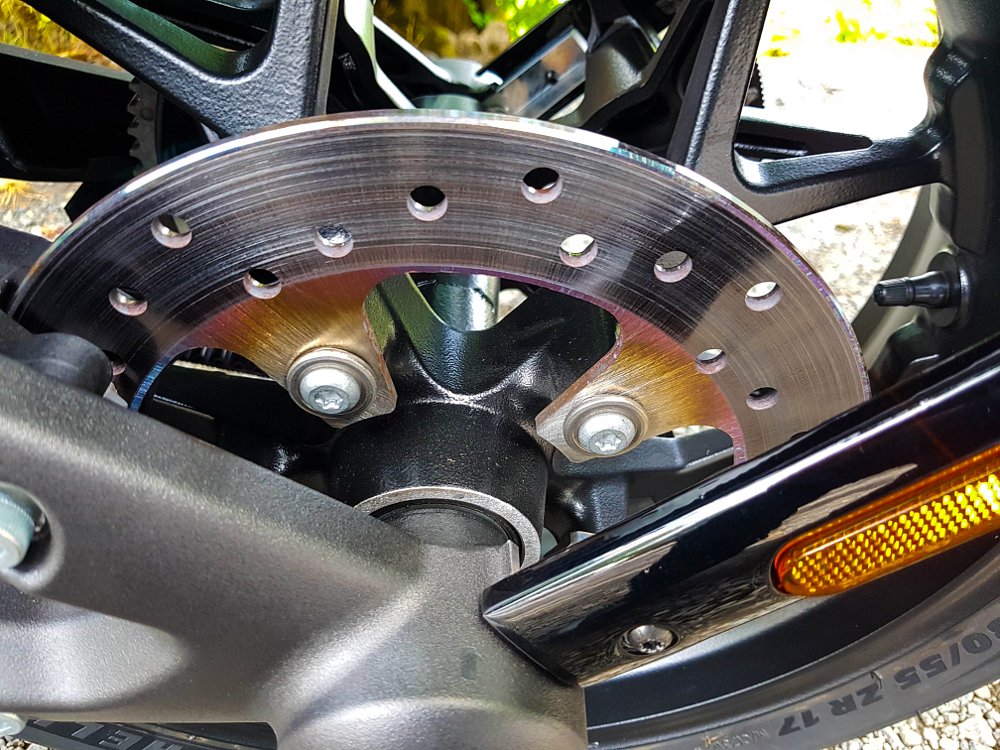
The LiveWire also has wheelie and stoppie control served up with the assistance of a six-axis IMU, but I didn’t need those during my brief test ride. (Harley, like Kawi and a few others, has their own proprietary acronyms/initialisms for these, but I’m using layman’s terms in the interest of brevity.) Traction control is dynamic and has varying levels of intervention. Harley says it "prevents the rear wheel from excessive spinning under acceleration when going straight or cornering." Rider modes alter throttle response, ABS intervention, traction control severity (or lack thereof), and braking regeneration.
I couldn’t test max distance claims too well since I didn’t really ride a bundle of miles, but there was still range left on the bike when I gave it back. (Maybe I got excited and forgot to write down my ending mileage and battery life. Lance will dock my pay, I am sure.) Range seemed to be in keeping with claims — maybe even over them by a hair. Good, Harley.
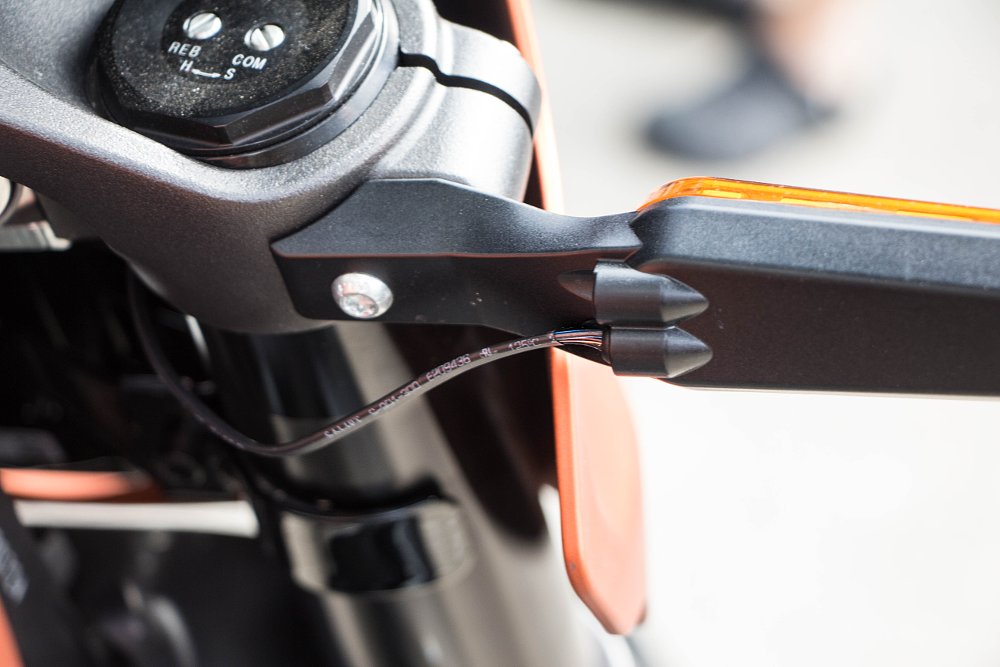
And then, as fast as it started, about 75 miles later or so, I had to give it back. Grudgingly. I stopped for a bit to really pore over the fit and finish, and with the exception of the turn signal wiring up front, I was just bowled over by the motorcycle. It feels very, very finished compared with most other electrics I have ridden, and I didn’t even get to really test some of the other whizbang electronic stuff the LW offers. (If we get a longer-term loaner, I will. Or one of the other CT authors will. Promise.)
I loved it. It might be the best electric motorcycle I’ve ever ridden. (It would be a tight race with an Alta Redshift, just due to the bang-for-the-buck factor. That bike obviously is a very different machine.) There was so little to complain about, and Harley made good on every claim I was expecting to skewer them on.
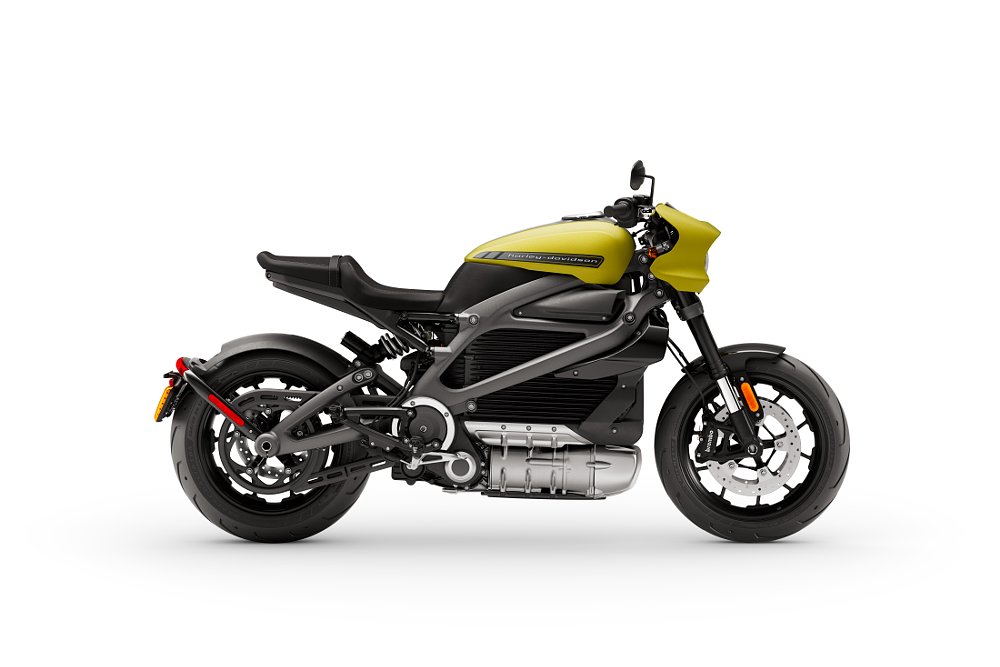
A brief interlude: I hate the rear fender
This is dumb, I know. But the rear fender is stupid. At first, I thought I liked it. But then my feelings changed. For starts, the fender is matte black. I presume it’s molded-in color. The only problem is the paint on the bike. The “tank” is what I would call the body color — lime green or orange or whatever. The front fender on all LiveWires I saw was gloss black. So, H-D, can we please apply either gloss black paint to the rear fender, or mold the front fender in matte black plastic, or maybe (ideally) just paint everything in the body color?
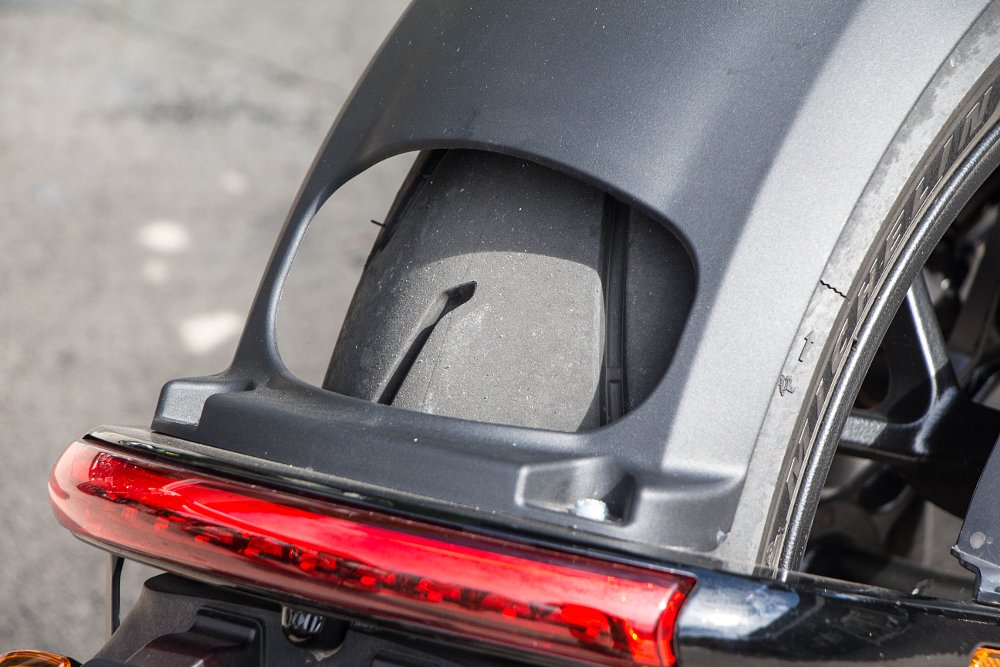
Secondly, there’s a huge hole in the rear fender. I thunk on why that might be for a while, and couldn’t figure it out. I asked one of the engineers, who said I was the first person to ask why it was there. Evidently, to hang the license plate holder where they did, they had to cover a lot of the tire. Styling folks didn’t like that, so the hole is to show off more tire. Given that I saw dirt way up above on the tails of a few of the bikes, it seems like a shitty spot for a hole.
The (lack of a) verdict
Here’s where I piss off Harley-Davidson and probably look like a cop-out author. Best of both worlds, right? I predicted this bike would be a halo bike, and in his presentation to those of us who write about scooters for a livin', CEO Matt Levatich used that exact term. Harley did deliver a fine, fine motorcycle. Like I said, possibly the best to date. (No, I have not ridden the SR-F yet, nor an Energica. They may best this on paper, but my suspicion is most riders will find the LiveWire to be the tops in terms of total package.)
So what gives?
It’s the price. Man, thirty fucking grand? I know they have cheaper bikes coming. I get it. They wanted to lead with a haymaker that slays the competition. But 30k? I mean, there comes a point when a bike gets so expensive relative to what it does that I can’t gauge if someone should buy it. There are a lot of great non-electric bikes that would best the LiveWire, but that’s not the point. There are other electrics that beat it on paper, but that’s not the point either. The motorcycle is an answer to “Who can build the best electric motorcycle in 2020?” and the price is an answer to “And how much would that cost?”
So really, then, it is my job to determine if a motorcycle of indeterminate future value is a good bargain for the person with thirty thousand dollars to spend who wants a very high-quality electric motorcycle (or wants a piece of what I suspect will be motorcycling history due to significance and scarcity).
And I’m not the guy to know that. That is such a specific set of circumstances that I don’t think I can even attempt to imagine how to think like that buyer, and I don’t think it’s a cop-out for me to write as much.
So I’ll render my opinion (for now) for the proles like me, and it comes in the form of a request. Please go to your local LiveWire dealer (which is not all Harley dealers, remember?) and tell them you have no interest in buying this motorcycle, but that you would like to please take one for a test ride. Especially do this if you like electrics, or you never wanted a Harley because they’re too dissimilar from the type of bike you normally ride. This is a great motorcycle, and Harley can make similar stuff (either a cheaper electric or same-capability ICE engine) if they see sufficient interest.
I’ll eat my hat if you don’t love this machine when taken independently of its sticker price.
| 2020 Harley-Davidson LiveWire | |
|---|---|
| Price (MSRP) | $29,799 |
| Motor | Liquid-cooled internal permanent magnet synchronous |
| Power | 105 horsepower |
| Torque | 86 foot/pounds |
| Front suspension | Showa 43 mm SFF-BP fully adjustable inverted fork |
| Rear suspension | Showa BFRC-lite fully adjustable monoshock |
| Front brake | Two 300 mm discs, four-piston monoblock calipers, floating rotor, ABS |
| Rear brake | Single 260 mm disc, dual-piston caliper, floating rotor, ABS |
| Tires front/rear | 120/70ZR17; 180/55ZR17 |
| Steering head angle/trail | 24.5 degrees/4.3 inches |
| Wheelbase | 58.7 inches |
| Seat height | 30 inches |
| Range | MIC city 146 miles, 70 mph sustained 70 miles, combined 95 miles |
| Curb weight | 549 pounds |

 Membership
Membership

